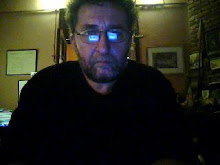Topic: Erotic Art
Transitory Art, Sex and Passion in Buenos Aires thru one of its trademark traditions.
The story begins with a fact: Palermo's oldest theme hotel-motel is soon to be demolished. Bought by one of the many top notch investors that are frequenting our country due to the excellent real estate opportunities and cultural level, this traditional spot is in its last days, as it waves farewell to its golden years, and thousands of thousands of visitors and regulars.
It's important at this point to highlight the fact that in Argentina, theme hotels-motels or hotels by the hour -regardless the name we use- is a strong cultural tradition for both for lovemaking and casual sex alike. In our society, where rent is high and relocation for the youth is not so common, these kind of hotels early appeared in our culture as a response to the problem arose in terms of intimacy, sex and pleasure.
The options range from 5 stars like hotels with all the sophisticated facilities, to kinky ones, to the traditional room rental per the hour. But prices aside, all of them are conceived to trigger passions, fantasies and wild dreams. Mirrored walls and ceilings, functional lighting and music decorate these rooms throughout the country. There are no social restrictions to the use, everyone does it; it's all part of the potential flavour within the encounter.
So, when the Townhouse group bought the property on 2151Thames st. in the posh Soho neighbourhood, they knew that something stupendous had to be done there before it closed for good. That's how, this creative group came up with the idea of taking advantage of the kitsch and sexy atmosphere of a long gone passionate scenario thru means of a revolution- like art show.
The concept is just marvellous and exciting. Holding an art show in this broadly frequented satisfaction hotel is a picture perfect challenge for artists and public alike. Sharing art and sex, a joy in the observing eye, the artist have dared to captivate the audience in a sophisticated and appealing way, creating a special intimate bond between them at the time the experience has to be lifted to the aesthetic world of pleasure and satisfaction.
The name of the show SOHO Telo Muestra is a word game in Spanish hard to translate without loosing the whit within. Telo is the Argentine nomenclature for theme hotel-motel, actually it's the reverse[1] way of hotel tel-ho, in Spanish the “h” is silent. Muestra is Spanish for show. However if said altogether Te lo Muestra, comes out as "shows it to you".
Indeed Townhouse is not only creative in the concept but also in marketing.
So, from June 23rd to July 16th the show will take place in each and every one of the 29 rooms featuring photos, paintings, sculptures, decoration and many, many surprises.
Every day from 11AM to 8PM the show will be open and free of charge.
Townhouse SOHO organizes this show together with the already famous Arte al Dia publishing company that hosts Gallery Nights, Chandon champagne and La Nacion news paper. They present this unique art show as transitory art, just as superb and glorious and fugacious as sex. These more than 30 artists will be showcasing their own interpretation of transitory art, sex, passion, seduction and fantasies:
MILDRED BURTON ALBERTO PASSOLINI
FLORENCIA RODRIGUEZ GUILES
GUILLERMO IUSO
ELEONORA MOLINA
SILVIA RIVAS
MARCELO DE LA FUENTE
ALEJANDRO MONTES DE OCA
GERARDO REPETTO
SERGIO TANTANIAN
AUGUSTO ZANELA
NICOLA COSTANTINO
MAURO BERNARDINI MARTIN CHURBA
RAMON GARCIA
JAVIER ITURRIOZ
MIRTHA BERMEGUI
DANIEL JOGLAR
ANA LOPEZ
ANA TRYBIARZ
BILLY WALLER
CARLOS AFFRANCHINO
VILMA VILLAVERDE
MUXIKATAR
BEATRIZ SOTO GARCIA
MARGA STEINWASSER CINTHIA DE LEVIE
ABEL TRYBIARZ
ROMAN VITALI
DAN WAISMAN DEBORA PIERPAOLI
GERARDO WAISMAN
SERGIO LAMANNA
DIEGO ALEXANDRE
GERARDO WOHLGEMUTH
RAFAEL BARSKY PABLO BAGEDELLI
[1]Argentine slang takes upon the game of reversing words and applies this concept to everyday phrasing. Our slang is known as “lunfardo”, a style of language very present in tango lyrics.
So if you are interested in Art or Antiques, and you are thinking of travelling to Argentina please feel free to email us…….. Please feel free to contact Flor Rodriquez by emailing her: Email: Flor Rodriguez. or Bob Frassinetti: For more information: Email: Bob Frassinetti. Press here to see all topics on Art, Antiques and Travel Information for Buenos Aires & Argentina:Daily Updates on Art, Antiques, Collectibles as well as travel information for Buenos Aires, Argentina. Phone me thru Skype, ID: Bob Frassinetti or you can also chat with me thru Yahoo, press here:
Yahoo Contact
Find me on MySpace and be my friend!
Read The Buenos Aires Art Dealer a e-zine magazine on Art, Antiques & Collectibles from Argentina. The Buenos Aires ArtDealer, Argentina.




